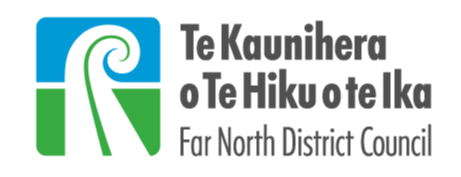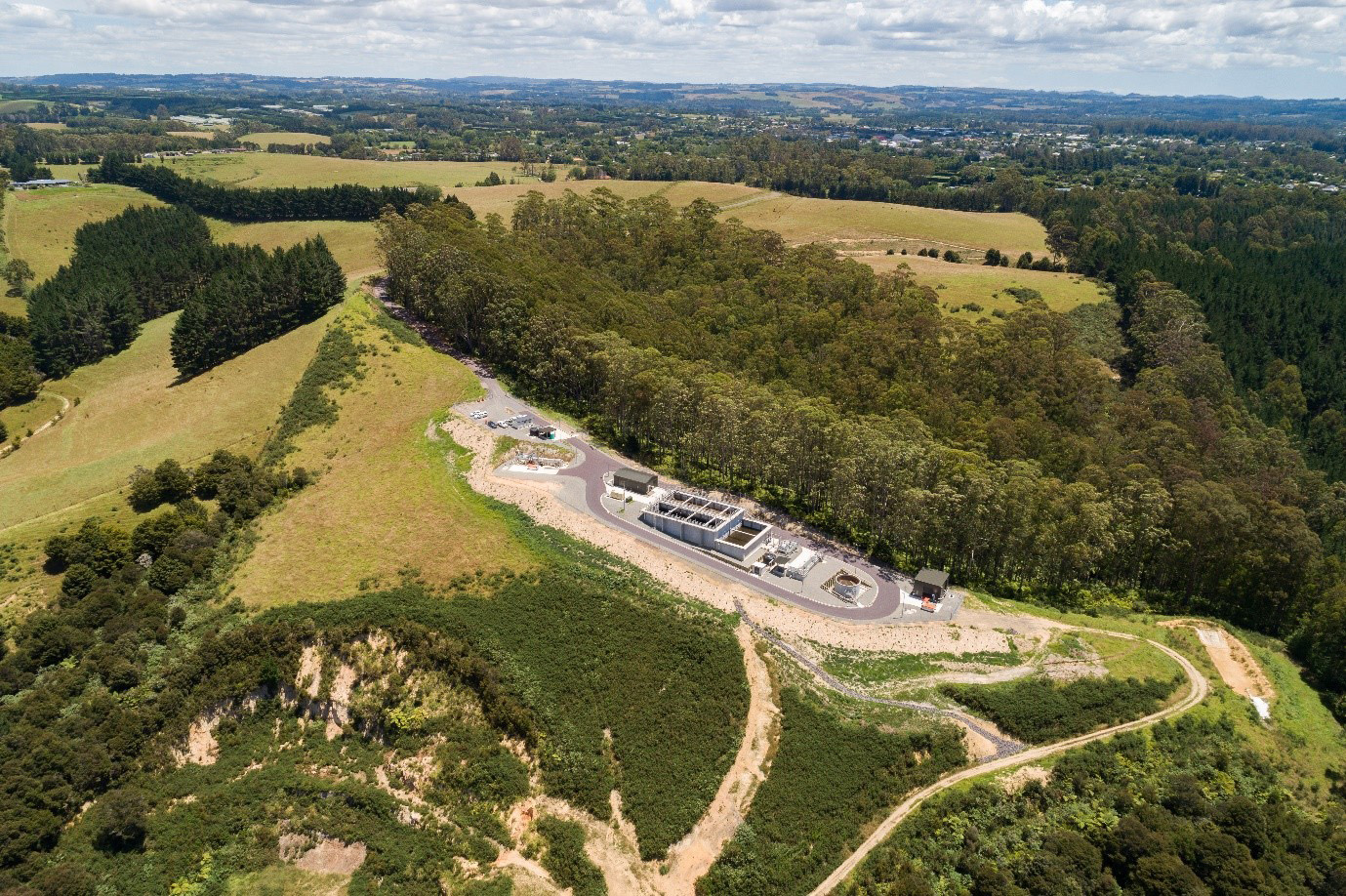Kerikeri Wastewater Treatment Plant
Project details
| Project type | Wastewater infrastructure |
| Project value | $27.1 million |
| Project status | Project completed |
The Kerikeri Wastewater Plant is the Council’s biggest ever infrastructure project and its ability to add hundreds of new customers to the sewer network is a game-changer for Kerikeri. The new facility significantly reduces the town’s reliance on septic tanks and other on-site disposal systems.
The new wastewater treatment plant was certified as completed on 23 October 2020 and is now up and running. The process of switching Kerikeri properties over to the new system was completed in May 2021.
The facility will allow the Far North’s fastest growing urban centre to accommodate new residents and businesses without having to spread outwards. More than 1400 properties in central Kerikeri will benefit from the sewerage scheme.
Project budget
The total cost of the project was $27.1 million, which will be offset by a $7.31 million subsidy from the Ministry of Health.
Scheme benefits
The new treatment plant is able to:
- treat 1000 cubic metres of wastewater per day (three times the capacity of the previous plant at Shepherd Road)
- treat waste from 1090 properties already connected to the Shepherd Road plant
- add another 350 central Kerikeri properties that currently rely on septic tanks.
A further 350 to 400 new properties within the expanded reticulation network can also connect to the system. The actual capacity of the new plant will be confirmed when it has operated in both dry and wet weather flow conditions.
The treatment plant updates the technology being used to treat Kerikeri’s wastewater emphasising efficiency, reliability and expandability.
The new connections improve quality of life, and of the local environment, by removing the need for hundreds of septic tanks.
The project supplies a long-term solution to an ongoing (medium-term) problem (full-capacity operation of existing plant).
Area of benefit
The Kerikeri Wastewater Plant is connected to homes and businesses in the scheme’s 'Area of Benefit' via 27 kilometres of new pipes. The new plant is three kilometres out of town on Okura Drive.
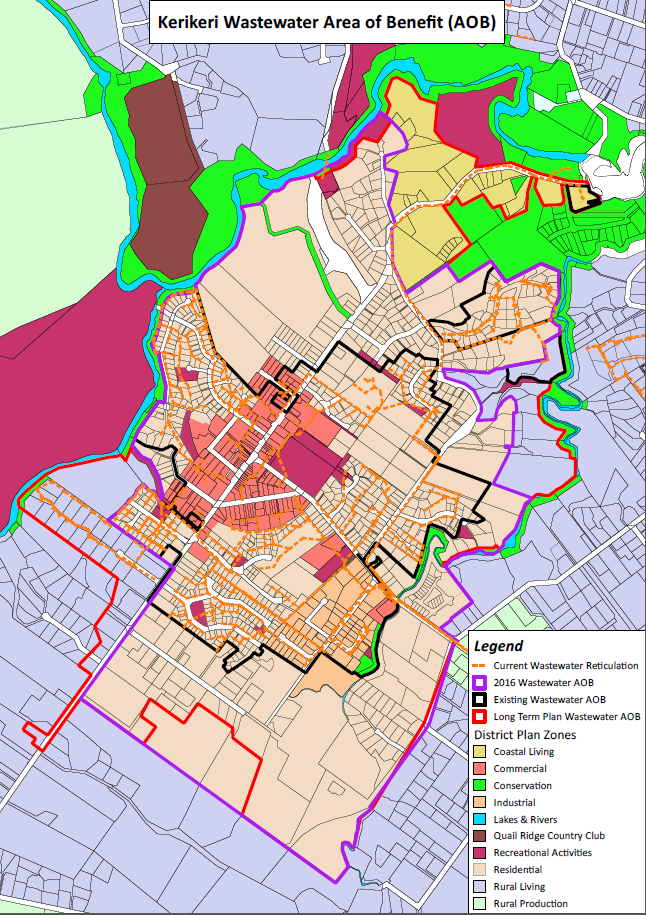
Project milestones
First sod turning on site, 13 March 2018.
The first sod turning on the site in 2018 signalled the beginning of the much anticipated project which has added hundreds of new customers to the Kerikeri sewer network.
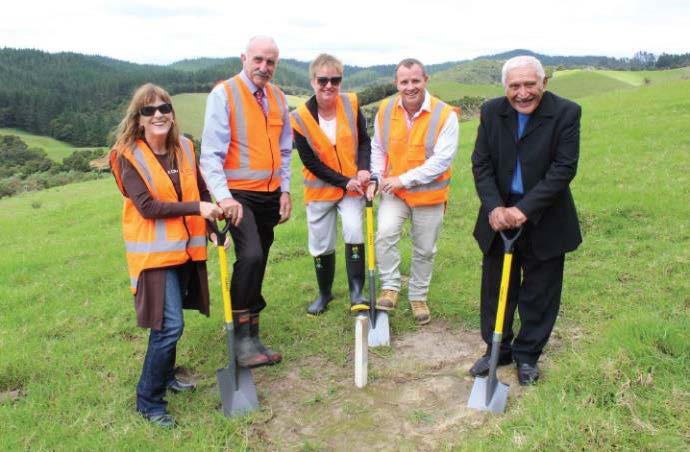
Pictured are (left to right) Deputy Mayor Ann Court, Mayor John Carter, Broadspectrum Chief Executive Urban Infrastructure Sandra Dodds, United Civil Construction Project Manager Greg Whitehorn and Minister Sid Kingi.
Construction starts, May 2018
The construction contract was awarded to Broadspectrum (New Zealand) Ltd. Stage 1 of construction included forming an access track to the rural site, requiring strict erosion and sediment controls.
United Civil Construction Ltd completed a 28.5 km sewerage network expansion around central Kerikeri to allow an initial 350 properties to connect to the scheme.
Concrete wall panel construction, May 2019
Construction began on the largest single component – concrete wall panels for the decant tank. About 70 pre-cast concrete panels, each weighing 11 tonnes took up to three months to install by crane.
Construction is completed, October 2020
Construction work on the treatment plant was certified as completed.
Commissioning process ends, November 2020
Initiation of the biological processes at the heart of the treatment plant made it ready to receive and treat wastewater.
Dawn blessing opening ceremony, 18 December 2020.
The treatment plant was officially opened on Friday 18 December with a dawn blessing on the site by kaumatua of Ngāti Rēhia, Ngāti Rāhiri and Ngāti Kawa. 30 guests representing local hapū, Northland DHB, contractors, neighbouring landowners, and FNDC elected members and staff attended the event.
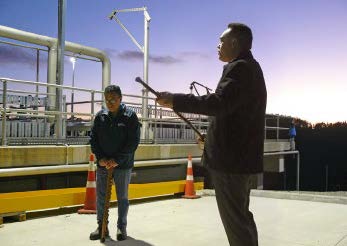
Pictured - Isaiah Apiata (foreground) and FNDC senior Māori liaison officer Ted Wihongi lead a dawn blessing of Kerikeri's new treatment plant.
Connection is completed, May 2021
The connection of homes and businesses to the new sewerage system was completed. If required, the new plant is designed to allow for expansion in two stages, with each stage allowing for another 800 to 820 properties to join.
The Final Phase in 2021
Decommissioning of the existing treatment plant in Shepherd Road.
Gallery
What does it cost, and who is paying for it?
The new treatment plant, the planning and engineering and the 27 kilometres of new pipes cost $27.1 million. Some of this was subsidised by a Ministry of Health subsidy of $7.3 million.
There is a one-off connection fee of $734.16 for connecting properties which were on septic tanks. There will be annual operating and capital rates for each domestic connection, see below. All rates and fees are estimates and include GST.
Rate Type | Connected Charge 2020/21 | Connected Charge 2021/22 |
Sewerage Capital | $309.62 | $698.57 |
Sewerage Operating | $620.01 | $617.07 |
TOTAL: | $929.63 | $1315.64 |
Those who elected to be connected, what did they get for the connection fee?
It pays for the emptying, cleaning and demolition of your septic tank, connecting your property to the pump station (or gravity sewer if applicable), connecting the power supply from your consumer unit to the new pump station and the restoration of the area. The Council will pay for the pump station and all pipes – regardless of length – to connect the pump to the main sewer line. We will also arrange and pay for the building consents.
What if I can’t pay these rates?
Unfortunately our legal obligations prevent Council from discounting rates. However, Central Government have implemented a rate deferment option that may be applicable dependant on the meeting of certain requirements. To find out more enquire through our online contact form.
Will I be able to connect my property?
Yes, if it is in the scheme’s area of benefit. Properties that can connect are those identified as being within the Serviced Area that is, those properties that the scheme has been designed to cater for. Plans showing the “Serviced Area” are available from Council. Council does not service properties outside the “Serviced Area” with reticulated wastewater services. Confirmation of whether your property is within an Serviced Area can be determined by contacting Council. You can call in to find out if your address is within the area of benefit.
Will I have to connect if my property is in the area of benefit?
No, you do not have to connect. If you choose not to connect, you will still be liable for an annual capital rate that everyone in the area of benefit pays. If you do not connect, there will be no connection charge ($734.16) and no annual operating rate. However, you will still have to accept and pay for the servicing and maintenance of your on-site disposal system. Under our current by-law, this is an annual service for aerated systems and every five years for septic tanks.
What if I choose to connect later?
If you choose to connect to the sewerage network after the construction phase ends in May 2021, it will be deemed to be private work though it will still have to comply with the council’s design, construction and quality standards. All costs will be payable by you, but the pump station and pumping pipework will be required to be vested in council, who will then maintain it. These costs include the cost of the pumping station, all piping to and from the pumping station, earthworks, building permits, emptying and demolishing your septic tank, and the electrical connection. An assessment by our independent engineers, who visited 377 properties in the area of benefit, estimated that the average cost of connecting a property privately in Kerikeri would be around $15,000, excluding GST.
I have just installed a new septic tank/aeration system. What am I supposed to do with it?
Everyone within the area of benefit retains the right to connect or not. Because you have a new septic tank/aeration system, you may elect to use that and not connect to the sewerage network. Provided your system meets Council standards and you maintain it as required under the by-law, we have no problem with that. However there are solid financial reasons to connect while we have the opportunity of a time-limited offer during the construction period.
Will I be compensated for not being able to use my existing system?
No. The Council will not purchase existing on-site systems or offer compensation.
The Council is only connecting properties in the central area of Kerikeri. Are outlying areas such as Riverview going to be connected and if so when?
Outlying areas such as Riverview and Reinga Heights will be considered for connection after the completion of the initial programme in central Kerikeri. However, there is no timeframe for this at present.
What about areas such as south-east of Shepherd Road or Inlet Road, which are both close to the treatment plant. Why are they not being connected?
The Council has a limited budget and is planning this project to give the immediate benefit to as many homes as it can. Logically, that means connecting high-density housing first (zoned residential, commercial and industrial), starting in the town centre and then moving out into other areas. However, there is no timeframe for this at present.
What about effluent discharge from the new Kerikeri WWTP? Where will that be and will that smell?
Treated effluent from the plant will be discharged in the Waitangi Forest in the same area used by the present plant. There will be no odour issues.
How will I know how to operate the new LLPS?
Letters were sent to all property owners containing:
* stickers detailing what cannot be put into the sewerage system
* an information sheet about the operation of the new sewerage system.
We can all reduce expensive and disruptive blockages in our wastewater system by following one simple rule: never flush wet wipes down the toilet. Every time you flush the toilet, pull the plug from a sink or have a shower, the wastewater drains into your private plumbing and out to our network. While the wastewater that enters our network consists predominantly of water, it also contains human waste, food scraps, fats, debris, chemicals and pharmaceuticals. Some of this matter can build up in private and public pipes, causing blockages and overflows which can be harmful to our health, harbours and waterways. This is why it is important for all of us to be conscious of what we pour or flush down our private drains. Commercial wet wipes are a particular problem and have increased maintenance costs and system failures markedly in the last few years.
What must I do when I experience a problem with the Wastewater system?
If the light and alarm sounds on the sewer system electrical box connected to your property, please phone us on 0800 920 029 or 09 4052750 and we will organise for the unit to be inspected.
How do I go about to apply to be connected?
The process is for the customer to call the contact centre. That way the Request for Service is created and gets channelled in the right directions. There is a New Connections process they will fit into. Alternatively, for a residential connection please see the link to the application form here:
1. The services connection application (as per the link) is to be lodged with FNDC.
2. Council will then review and provide feedback.
All wastewater connections are to be installed by authorised agents of Council or a licensed drain layer. Site Plans As well as the application form, a copy of a detailed site and services plan/s showing all relevant information is required for Council to process the application. The plans shall clearly show: property boundaries, location of existing services, location of proposed connection, location of obstructions and size and type of materials. FNDC can provide plans upon request. Contact us on 0800 920 029 if you require any help.
Will I get a Code of Compliance for the installed infrastructure and connection?
No Code of Compliance will be issued by Council. Work are being done by a Qualified Drain Layer to Engineering Standards as approved by Council.
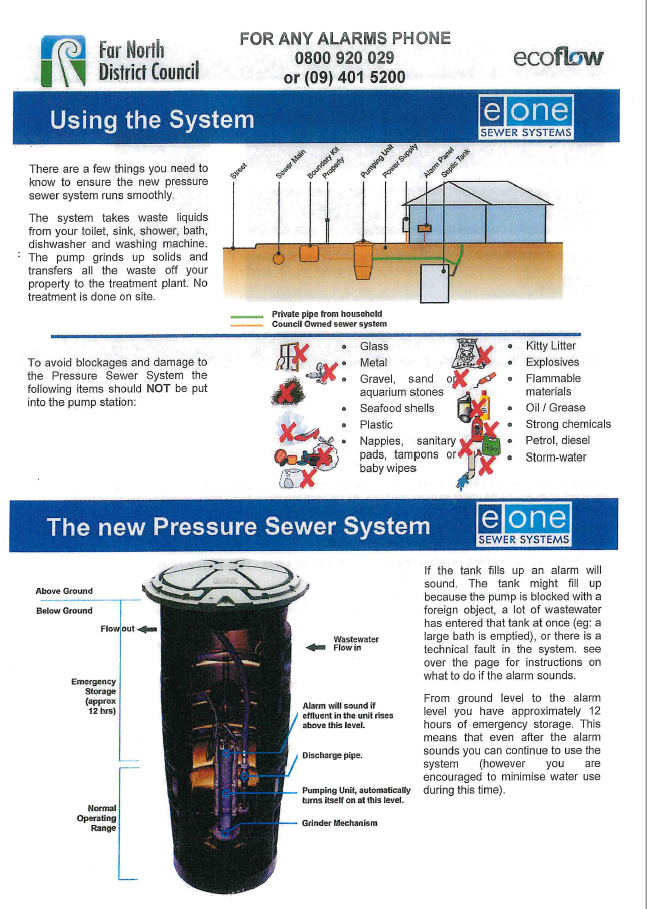
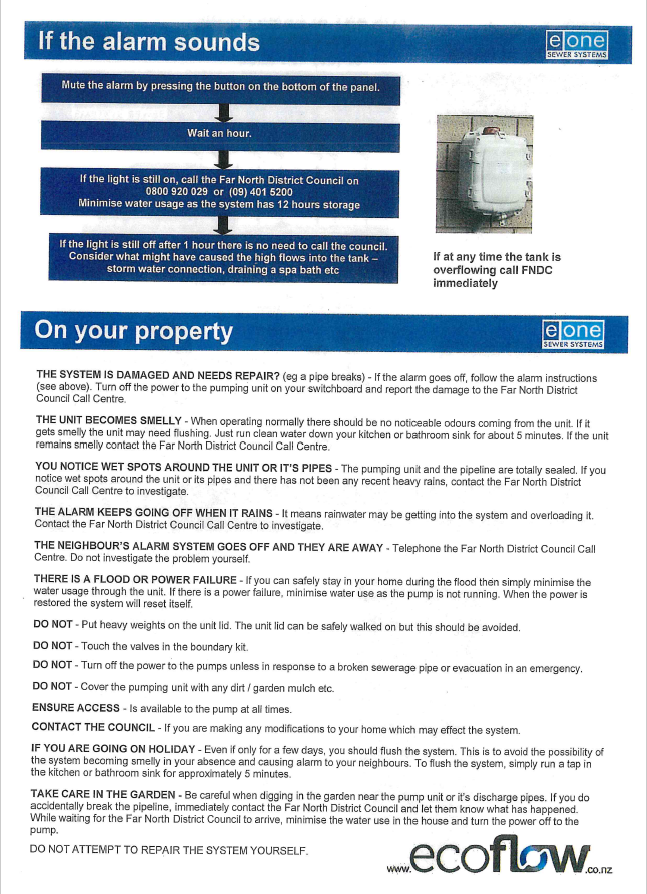
Location
Okura Drive, Kerikeri 0230 View Map

